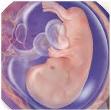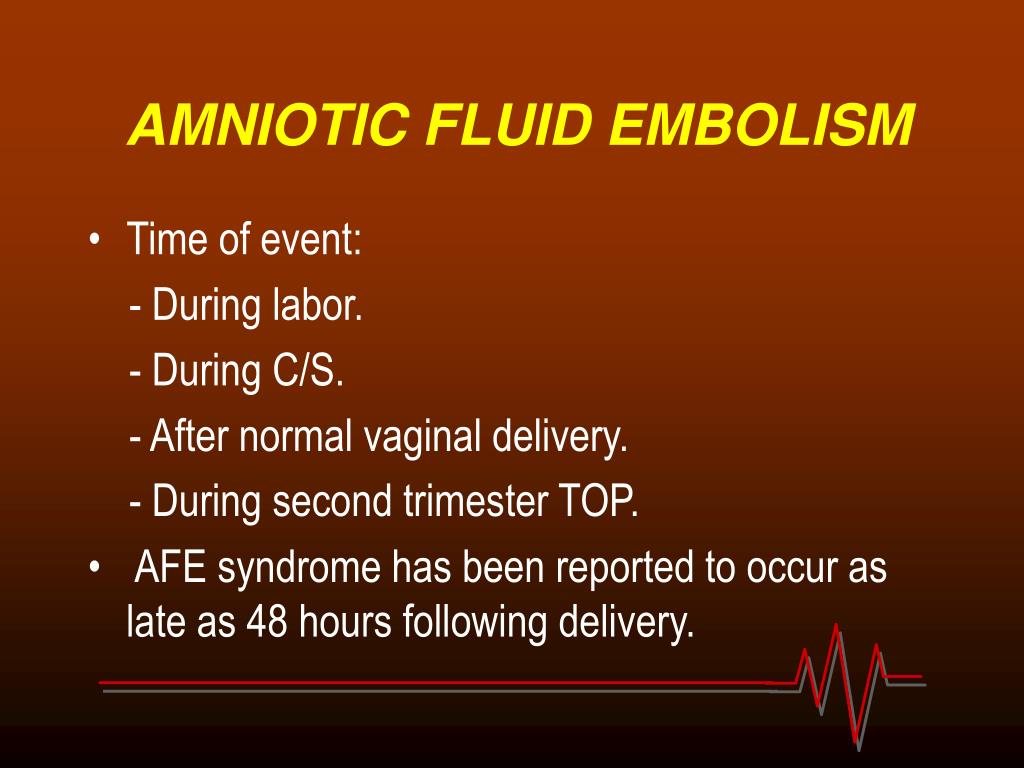

Instead, treatment of the individual symptoms must happen as they occur. What treatments are available for AFE?īecause of the misunderstood and sudden nature of AFE, there is no truly dedicated treatment of amniotic fluid embolism. For example, some procedures, induction methods, and operations can accidentally or negligently lead to some of those risk factors occurring. In addition, medical accidents, malpractice, and negligence can cause AFE. Some evidence suggests that age, placental abnormalities, eclampsia, uterine ruptures, and other conditions can disrupt or damage the placental barrier, which increases the possibility of AFE occurring. The risk factors of amniotic fluid embolism aren’t well known.

This variance comes from the fact that it’s not always initially clear if the death or injury occurred because of AFE or due to another factor. Of those incidences, the morbidity and mortality rate ranges rather widely between 20-60 percent. Statistics show that AFE occurs in roughly 1 delivery out of every 40,000 in North America. However, one study looking at the intersection between AFE and medical malpractice lawsuits for AFE shows that the condition is uncommon to rare. What are the statistics and risk factors of amniotic fluid embolism? The whole process happens quickly, and death can occur within an hour from any 1 or more of these symptoms. Combined, the symptoms of AFE can lead to multiple organ failures. The blood loss can lead to more complications, up to and including the death of the mother. The next stage of AFE includes severe hemorrhaging. In cases where AFE starts before the mother delivers, the symptoms can also cause fetal distress. The patient may experience high anxiety and agitation while showing irregular or abnormal vital signs leading into the major conditions of AFE. Those symptoms can also serve as signs that AFE is about to occur. Women may also experience vomiting, seizures, nausea, and a host of other symptoms as their bodies go through the trauma. The first stage is the most critical as maternal death can easily occur at that point.

This, in turn, can also lead to respiratory failure. What are the signs and symptoms of AFE?ĭuring the first stage of amniotic fluid embolism, cardiac arrest can stop the heart. From that moment on, increasingly detrimental health effects will start to occur. That inflammatory response can lead to blood clotting in the blood vessels and lungs. This can all occur during a cesarean delivery (C-section) as well.ĪFE occurs when the mother’s immune system treats the fluid or materials as a potential threat, which can trigger a severe immune response. For example, the placenta can remain in the mother after the delivery and allow fluid and material to enter her bloodstream. The trauma or injury usually occurs during labor, but can also occur right before or after. That breakdown can come from injury or trauma and serves as the means for the fluid or material to pass into the mother’s circulatory system. What causes AFE?ĪFE isn’t fully understood, but it’s mainly observed to occur when there’s a breakdown of the placental barrier. Unfortunately, for a select few individuals, the fluid or cells can trigger a severely negative or allergic reaction in the mother as the fetal material enters her circulatory system. Other fetal material, such as cells, hair, or other detritus can also initiate AFE.įetal material entering a mother’s bloodstream can and does happen with no consequences for most women. But in the meantime, here is what you need to know: What is amniotic fluid embolism?Īmniotic fluid embolism (AFE), also known as anaphylactoid syndrome of pregnancy (ASP), is a rare but serious condition that occurs when the amniotic fluid surrounding an unborn child enters the mother’s bloodstream. Only an experienced and knowledgeable birth injury attorney can help you get to the bottom of this question. Those complications can range from lifelong medical issues to death.īut how can you tell when carelessness, misdiagnosis, or another type of malpractice led to AFE, or if the amniotic fluid embolism was inevitable? Like many maternal injuries (injuries to the mother), amniotic fluid embolism (AFE) can result in complications for both mother and child. Are AFE clots a sign of medical malpractice, or bad luck?


 0 kommentar(er)
0 kommentar(er)
